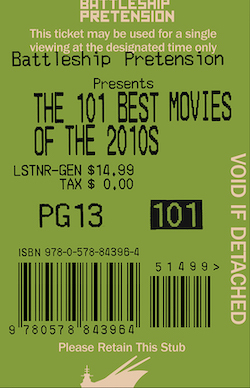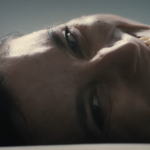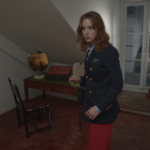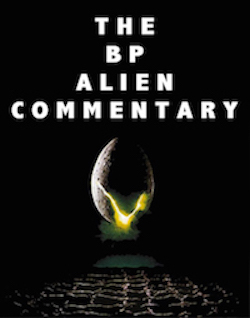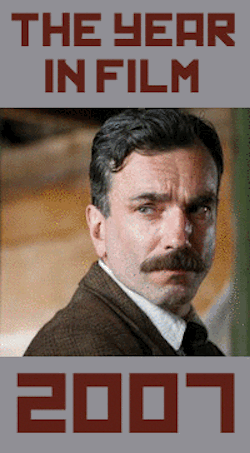Home Video Hovel- David Lean Directs Noel Coward, by Tyler Smith
When we think of David Lean, we undoubtedly think of sweeping vistas. We think of vast deserts, of exploding bridges, and ice palaces. We think of a director of boundless ambition. Which is why it seems so strange that he got his start adapting the works of Noel Coward- quite possibly the driest and wittiest Englishman in history- into film. Coward was, first and foremost, a playwright who, even when writing original screenplays, thought largely in stage terms. And the stage is, by definition, a limiting space. To think of the man that would go on to direct such films as Lawrence of Arabia and Bridge on the River Kwai could so expertly bring Coward’s clever and poignant to the screen and give them life and vigor without ever detracting from the plight of the characters is simply amazing.
Criterion recently released a collection of the collaborations between Lean and Coward in a gorgeous four-movie set. Over the course of these films, all made within three years, we see the emergence of David Lean’s virtuoso directorial style and Coward’s comfort and even excitement with the film medium, which he was previously lukewarm about.
IN WHICH WE SERVE (1942)
Noel Coward wanted to contribute to the war effort and so he put together this film to help with British morale. And, indeed, it is a superior war film. It is surprisingly ambitious in its scale, with scenes taking place on board a battleship, in life rafts, and back home in war torn London. And, in fact, it is this third aspect that I find to be most worth mentioning. The majority of war movies will depict battle with an unflinching eye for detail. What Coward and Lean manage to achieve with In Which We Serve is to show that indeed all of Europe was a battlefield. While soldiers valiantly strove to gain ground, their families were back at home, huddled in closets, listening with dread as the Germans mercilessly bombed the city. It is these scenes that really stick in my mind. We see the sheer defenselessness of these characters, who have no real means of defending themselves except to simply crouch down and hope for the best. It is this sensitivity to the characters involved that sets In Which We Serve apart from other, lesser war films. Coward and Lean understand that one can have exciting action set pieces, but if we don’t care about the people in the midst of them, it won’t stick with us. It is this understanding that Lean would carry over into his later war epics. If the filmmakers aren’t careful, their characters could be swallowed up by the events around them. Thankfully, that didn’t happen and the film was financially and critically successful, garnering Oscar nominations for Best Picture and Screenplay, with Coward receiving an honorary award just for making the film. While the making of the film seemed pretty grueling at times, Coward considered it such a rewarding experience, that he decided to bring his collaborators back to make several more films.
THIS HAPPY BREED (1944)
After the rather ambitious scope of In Which We Serve, Coward decided to scale things back and work on an adaptation of his play This Happy Breed, about twenty years in a working class family. The film doesn’t necessarily escape its stage roots, but that is actually something of an asset here. After returning from service in World War I, Frank Gibbons and his wife Ethel move with their three young children into a nice, quiet suburb of London. It is in this house that most of the action takes place. We see the daily struggles of the Gibbons family, including weddings, births, betrayals, and death. Throughout it all, Frank and Ethel maintain a quiet dignity, even when things are going poorly. One could take their stoicism as being cold, or perhaps even oblivious, to the events around them. But we are able to glimpse a deeper understanding than we could have suspected. These people are well aware of how unfair life can be, but they have no choice but to, as would later be repeated, keep calm and carry on. The house works as a good base of operations; it is, for some family members, a safe haven from the cruelty of the world. For others, however, it is a prison; an overwhelming symbol of conformity. Lean, through his gliding camera work, manages to make us feel as if the house is our own. By the end of the film, we are comfortable there; we feel as though we have a real history with it, just as the characters do. Lean and Coward go on to show tremendous sensitivity in how much of this family they will show us. There is a scene in which Frank and Ethel are informed of the death of a loved one; the news is broken to them off screen, which seems somehow best. While the film has welcomed us into the Gibbons home, we feel as though there are some things that we have no right to see; personal moments that should remain within the family. This Happy Breed is both funny and heartwarming, while also surprisingly harrowing and frank; the perfect blend of style and substance.
BLITHE SPIRIT (1945)
Both Lean and Coward seem to take a step backward with Blithe Spirit, based on Coward’s play. Noel Coward scholar Barry Day explains in the special features that Lean did not particularly care for the play, and it shows. Almost all of the virtuoso camerawork seen in In Which We Serve and This Happy Breed is largely absent from Blithe Spirit. Like Breed, this film also mostly takes place in one location, but Lean doesn’t seem that interested in exploring the space. Instead, he is content to let the actors do the work. Admittedly, this is probably a good idea, as the actors all do a very good job in playing up the inherent theatricality and surprisingly dark humor of the piece. Rex Harrison- who apparently also didn’t like the play- stars as a man on his second marriage. His first wife died years before and he is reasonably happy with his second wife. He is currently writing a mystery novel about psychics and mediums, so he invites over the local practitioner to try to contact the dead. He has no expectation of this happening, however; he just wants to get a good sense of what he is writing about. Much to his surprise, though, the ghost of his first wife arrives at the house and goes on to make life miserable. There are nicely farcical elements to the film, and I can appreciate the flippancy with which it approaches the usually solemn subjects of fear and loss. However, this general attitude goes just a bit too far and actually kept me from getting fully involved in the characters’ story. In what could have been a genuinely funny rumination on loss and holding onto the past, Blithe Spirit is content to skip lightly over its subject, making for a pleasant enough movie, but nothing too memorable.
BRIEF ENCOUNTER (1945)
When watching these films, the underlying theme that I come across is a refreshing lack of judgment. Noel Coward seems to have a genuine love for his characters; he understands them. And Lean had a technical understanding of how best to shoot and edit a film in such a way as to emphasize the thoughts and emotions of these characters. Having dabbled in fantasy with Blithe Spirit, Coward decided that he wanted to come back down to reality with Brief Encounter, a story that is small in scale, but absolutely epic in emotion. The story is simple enough; a woman bored with her marriage finds solace in an affair with another man. We’ve seen this sort of story played out in countless movies, but never quite like this. It would have been easy to make the woman’s husband insensitive or oblivious or abusive, but Coward knows better than to do that. The husband is doting and dependable. It is that very dependability that sends his wife into the arms of another man. Fear of the status quo- however pleasant it may be- can be a surprisingly powerful motivator. Lean and Coward’s real genius is to so effectively put us in the mindset of Laura, the wife, whose exhilaration at being able to feel real passion again is palpable. Her affair isn’t even particularly sultry; we get the impression that there really isn’t that much sex going on. It mostly consists of going to movies and to dinner. Nonetheless, she is going behind her husband’s back and doing something she knows she is not supposed to do. And yet she does genuinely love her husband and knows that he loves her. So, when the affair comes to an end, Laura is heartbroken and so are we. This is very strange, because we recognize- as she does- that she has a perfectly fine, loving marriage to go home to. That is a comfort, but only a small one. In the end, we somehow wish there was a way for everybody to be happy and together, but we know that isn’t possible. This sort of torn feeling was unusual for the time. Normally, audiences would simply root for the marriage to win out and perhaps even for the wife to be somehow punished, at least cosmically. But that is an objective, judgmental view. Lean and Coward- ever understanding of their characters- use the opportunity to put us in the uncomfortable- unbearable- emotional state of Laura, and allow us the sad excitement of connecting with another human being.
Criterion has really done a wonderful job with this set. It was enjoyable to watch the collaboration take shape, complete with artistic peaks and valleys. To watch David Lean really come into his own as a director is probably the primary selling point for any cinephile, but there is so much more here. We get to see Noel Coward become comfortable working in an exciting new medium and introduce his witty, sensitive storytelling to moviegoers.













